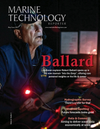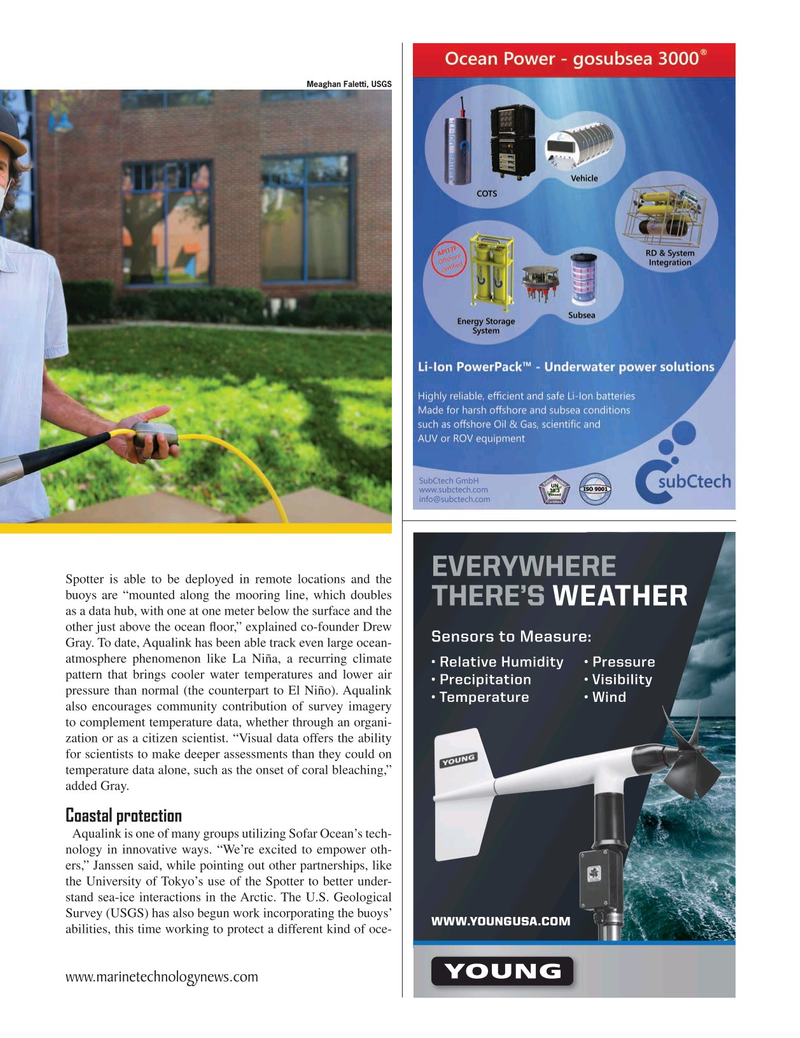
Page 45: of Marine Technology Magazine (May 2021)
Hydrographic Survey Sonar
Read this page in Pdf, Flash or Html5 edition of May 2021 Marine Technology Magazine
Meaghan Faletti, USGS
Spotter is able to be deployed in remote locations and the buoys are “mounted along the mooring line, which doubles as a data hub, with one at one meter below the surface and the other just above the ocean ? oor,” explained co-founder Drew
Gray. To date, Aqualink has been able track even large ocean- atmosphere phenomenon like La Niña, a recurring climate pattern that brings cooler water temperatures and lower air pressure than normal (the counterpart to El Niño). Aqualink also encourages community contribution of survey imagery to complement temperature data, whether through an organi- zation or as a citizen scientist. “Visual data offers the ability for scientists to make deeper assessments than they could on temperature data alone, such as the onset of coral bleaching,” added Gray.
Coastal protection
Aqualink is one of many groups utilizing Sofar Ocean’s tech- nology in innovative ways. “We’re excited to empower oth- ers,” Janssen said, while pointing out other partnerships, like the University of Tokyo’s use of the Spotter to better under- stand sea-ice interactions in the Arctic. The U.S. Geological
Survey (USGS) has also begun work incorporating the buoys’ abilities, this time working to protect a different kind of oce- www.marinetechnologynews.com
MTR #4 (34-49).indd 45 5/28/2021 11:49:36 AM

 44
44

 46
46
